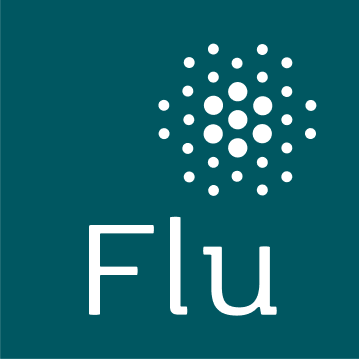The Negative Effects of Vaccine Hesitancy on Vaccination Rates
Vaccine hesitancy is a threat to public health
Vaccines are known to protect people from serious infectious diseases, such as whooping cough, measles and influenza. Yet in recent years, vaccine hesitancy has been on the rise—to the point that in 2019, the World Health Organization (WHO) identified it as one of the top 10 threats to global health.
Vaccine hesitancy isn’t anything new; it’s been an issue since the introduction of the smallpox vaccine in the 18th century, when about 400,000 people were dying of smallpox each year in Europe. However, it has increased in recent years, with more people questioning vaccination as anti-vaccine messages have been amplified on social media.
As a result, vaccine hesitancy is slowly chipping away at the herd immunity achieved for various infectious diseases, including polio and measles—threatening decades of progress that had been made in the eradication of these diseases.
Hesitancy around vaccination is now causing people to refuse or delay vaccination even before vaccines become available. Before the highly anticipated rollout of the COVID vaccines—described as the largest vaccination campaign in history—many didn’t plan to get a COVID vaccine; in polls taken during the early months of the pandemic, as few as 50% of Americans said they didn’t plan to get one, once it became available. In December 2021, after COVID vaccines were introduced to the American public, a survey found that the top reason given by those who chose not to get the COVID vaccine was rooted in their worry about vaccine side effects.
Flu vaccine hesitancy has spanned several years
In the meantime, influenza vaccines have not been exempt from vaccine hesitancy. Flu vaccine hesitancy created concern for public health officials at least as far back as 2009, when a new influenza A(H1N1) virus (known as the swine flu) spread quickly worldwide to create the first global flu pandemic in 40 years. A vaccine that targeted this virus was developed separately from the existing seasonal flu vaccine as part of a rapid response to a WHO pandemic alert. The new flu shot was distributed in October 2009 and became available in large quantities in late November; however, uptake was lower than expected, likely because the pandemic had already peaked in October.
The low uptake rates of the new Influenza A(H1N1) vaccine prompted a meeting of public health experts. The report generated from that meeting warned about low public confidence in vaccines, which could weaken a rapid response to a more severe pandemic in the future.
More recently, vaccine hesitancy caused concern at the beginning of the 2022-2023 flu season, when flu cases rose earlier than usual and the rates of flu vaccination at that time were lower than in previous years.
Flu and COVID vaccine hesitancy arise from a variety of reasons
Knowing that vaccines can be effectively used to help prevent disease or serious illness, what causes people to delay or reject vaccination?
The reasons can vary. A survey by the National Foundation for Infectious Diseases (NFID) taken in August 2022 found that half of the adults surveyed did not plan to get a flu vaccine. The top reasons they gave for their decision included:
- Their belief that flu vaccines don’t work very well (41%)
- Concern about potential side effects from the flu vaccine (39%)
- A personal history of never getting the flu (28%)
- Concern about getting flu from the vaccine (24%)
- Their belief that flu is not a serious illness (20%)
A study of adults who were hospitalized with severe acute respiratory illnesses during the 2019-2020 flu season found those people who had not received a flu vaccine gave similar reasons to the unvaccinated NFID survey respondents. Of the 264 patients who were unvaccinated in the study, 36.7% said they didn’t think the flu vaccine was effective, while 14.4% said they thought it wasn’t safe. (Notably, another 29.2% said they intended to get a flu vaccine but didn’t get around to it.)
Another study found that the reasons for flu and COVID vaccine hesitancy tend to fall into four specific categories. These include concerns over vaccine safety; a sense that no vaccination is necessary; a lack of trust (for example, in influenza and vaccines, or in governments that have required vaccination); and cultural reasons, such as a belief in natural remedies and prayer as alternatives to vaccination.
Health misinformation can also create vaccine hesitancy
False, inaccurate, or misleading information, also known as misinformation, has also had an important role in the growth of vaccine hesitancy. Misinformation about health-related topics—including influenza and flu vaccines—can have some serious consequences to individuals and the general public. For example, misinformation can cause people to avoid proven treatments for health conditions; it can also cause people to reject public health measures designed to protect people from diseases.
An example of this was illustrated in a 2022 New York Times article, in which several pediatricians observed that in their practices, more parents are choosing not to have their children get their routine childhood vaccinations. The pediatricians associated this phenomenon with COVID-19 misinformation or disinformation.
Misinformation isn’t necessarily shared with bad intent; it may be passed along by people who don’t realize the information they’re passing along is false. (Disinformation describes misinformation that is intentionally shared for malicious reasons, including financial profit or political advantage.)
Social media, online sites and search engine use have helped misinformation spread rapidly—and on a vast scale. Researchers have found that just 12 people were responsible for the majority of disinformation and lies about COVID-19 vaccinations that had been spread over social media.
Subsequently, health misinformation has become enough of a problem that the Office of the U.S. Surgeon General, Dr. Vivek Murthy, has made it a focus of concern. In 2021, Dr. Murthy published an advisory about the urgent threat of health misinformation, noting that “health misinformation is a serious threat to public health. It can cause confusion, sow mistrust, harm people’s health, and undermine public health efforts.” Likewise, the U.S. Department of Health and Human Services has made counteracting misinformation an objective within its national strategic plan in the use of vaccination to eliminate vaccine-preventable diseases.
Vaccine hesitancy can spread from one type of vaccine to others
Regardless of the reasons people give for delaying or refusing vaccination, if people have hesitancy over getting one particular vaccine, they may be more likely to avoid getting other vaccines.
This point is illustrated in findings from a survey given in 2018 and 2019 to parents of children aged 17 and under. In the survey, 1 in 5 parents stated that they were “hesitant about childhood shots.” These vaccine-hesitant parents were also less likely to get their children vaccinated for the flu, with 26% fewer children of vaccine-hesitant parents receiving flu shots compared with parents who were not vaccine hesitant.
Similarly, in a recent data analysis of COVID and flu vaccination rates, investigators found that flu vaccination rates between September 2020 and January 2021 were stable before the widespread availability of COVID vaccines later in 2021. However, after COVID vaccines were widely available, investigators found that flu vaccinations in children decreased over the following flu seasons. (Flu vaccinations in older adults remained stable.) The investigators concluded that factors associated with the rates of COVID vaccination—such as safety concerns—may have affected influenza vaccination rates; however, more studies are needed to determine what may have caused this drop in flu vaccinations.
Check your sources of health information
Despite the rise of vaccine hesitancy, vaccines remain an important weapon against infectious disease. In terms of influenza, we know that getting a flu shot each flu season remains the best way to prevent getting the flu. Influenza vaccines prevent millions of illnesses due to the flu, and even more could be protected if more people were vaccinated.
Knowing the facts about influenza and flu vaccines can help you and your loved ones prepare for each flu season and protect your health with confidence. Learn how to recognize misinformation about influenza and flu vaccines and avoid spreading any information that you’re not sure is true.
Read about some common myths about flu and flu vaccines

